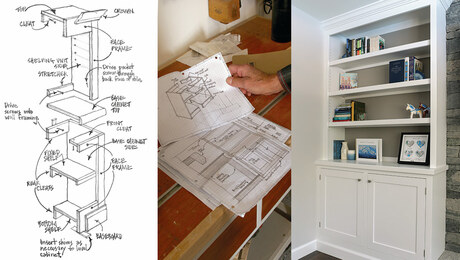Replace Rotten Boards in a Roof Overhang
Readers and an expert consider the source of the problem and how to fix it without completely reroofing.
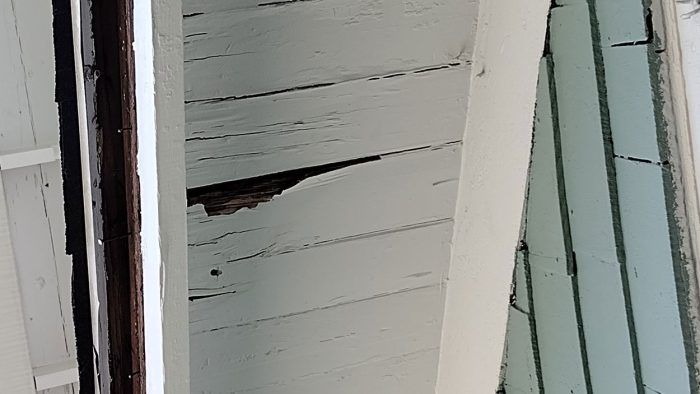
TinySeedling is repairing/renovating a historic Craftsman-era house and asks, “Is it possible to replace rotten overhang boards … without removing the roofing? I believe the boards are tongue-and-groove, but am not certain yet.”
That’s the subject of this FHB Forum Spotlight.
A surgical approach
Calvin, who is the first to jump in, wonders about the condition of the roof: “I ask about the shingles because the water that caused the rot came from somewhere and to attempt repair before the cause is taken care of would be futile.” Adding that there’s no easy way to remove the rotted boards, he suggests using a reciprocating saw or Multimaster to cut out individual boards, which he estimates are tongue-and-groove. He says that while the paint looks good in the photos, the shingles look old.
TinySeedling agrees with his response, and adds that a roofing contractor told TinySeedling that the roof, made of 30-year shingles, is 20 years old. “Looks like only a few of the boards are rotten. I suspect the wood rot may have started before the new roof was installed. I am debating whether to remove the asphalt shingles, replace the T-and-G boards for almost the entire length of the overhang, then cover with plywood and reshingle, or just try to replace a few boards here and there for the time being.”
Calvin advises using a Fein Multimaster, “a tool that allows surgical smooth cuts, rather than a reciprocating saw, which is more hack and whack. This might allow you to cut out one board for a look-see, rather than attacking a whole bunch of the soffit.” He says that he would first remove a board and try to discover the extent of the rot. He cautions, “This is not fun work. I’ve done a boatload of rot repair over my half century in the trade (sounds longer that way). Don’t wear a white shirt, and have some bug spray handy.”
TinySeedling likes Calvin’s ideas and the tool recommendation.
Go whole hog or a little bit?
Unclemike42 writes that judging from one of the posted photos, TinySeedling might be able to take some measurements to verify the type of construction. “It seems to me that the roof decking is a single layer of boards. Any attempt to replace might best be put off until replacement of the roofing is planned.”
Reader [email protected] asks that if there aren’t too many rotten boards could the soffit be skinned over and then everything be replaced when the roof is replaced in 10 years.
Calvin thinks this would work, provided that the areas that are leaking are found and repaired.
TinySeedling thinks that [email protected]’s solution is a good option and adds that the shingles next to the sidewall are covered by a more recent addition of cement board siding.
A new voice, 1095mike, enters the conversation and asks about the method for refastening the old shingles to the new boards, as the brittle shingles will break during the renailing process. “Better to do the job correctly,” he advises.
TinySeedling writes that they were hoping to just replace the rot, but as the roofing is attached to the rotten boards, “we either need to reskin or rebuild entirely, with new shingles, wood, etc.”
Our expert weighs in
We asked Josh Salinger, founder and CEO of Birdsmouth Design-Build in Portland, Ore., for his expert advice concerning this problem. Here’s his take:
TinySeedling’s damaged soffit boards are a great example of a common dilemma in residential renovations—whether to go big or go small with any particular repair. Ideally, one wants to avoid the messy middle ground wherein one spends a fair bit of money but doesn’t solve the underlying issues and ends up spending the money and then some down the road anyway. TinySeedling is in this situation, with the unenviable choice between a Band-Aid fix and a larger project that will address the issues for the long term.
The original construction likely had a 2x frieze board attached directly to the sheathing of the house with a barge rafter set out a distance from the wall and supported by knee braces. The T&G cedar spanned between the frieze board and barge rafter and was nailed off from above. Then the house was likely tar-papered, flashed, and roofed, with the original siding then installed. From TinySeedling’s description, this has been buried further by siding added during a previous addition. At the wall, the T&G soffit boards are sandwiched between the frieze board below and the roofing and layers of siding above. On the other side, the boards are sandwiched between the barge rafter and the roofing. In addition to this, the roofing is nailed into the T&G boards. This makes the rotten boards difficult to remove and any new boards difficult to replace.
Clearly there is damage being caused by water to both the shingles and the T&G soffit. Without further investigation, I would venture to guess that it is caused by the new siding covering the roofing and flashings. Whatever the cause, priority #1 is to address the water intrusion to craft a durable and long-term solution.
TinySeedling mentioned that the roof has about 10 years left, which to my eye seems generous, but the rest of the home’s roof may be in better shape. Assuming a full roof replacement is warranted in 10 years’ time, it may be worth finding a temporary fix that will address the rot and aesthetics in the interim. If TinySeedling is considering a larger investment in a roof, the premium to address the underlying issues will be less of a lift in terms of disruption and expense in the future. The roof replacement will expose the structure, and presumably there will be better access and resources available during that work, allowing this investment to be leveraged.
As the commenter calvin mentions, removing the damaged boards with an oscillating tool such as the Fein Multimaster is likely the best approach. Cut the boards as close to the frieze and barge rafters as possible to remove the majority of the damaged material, and then focus on digging out the leftover material as best as possible with hand tools. A metal blade in the multitool will be able to remove any roofing nails in the way. A new T&G board can be primed on all six sides and tucked up into this cleaned out cavity above the frieze board. Construction adhesive on the topside of the board will help adhere the shingles to the new piece until they are replaced. On the barge side, the new T&G board can be held in place from below with a 1x trimmer or cove molding nailed onto the backside of the barge rafter that can run up the entirety of the rake. This won’t be very visible at all, and it will hold the barge-side of the new soffit boards in place. A fresh coat of paint over the repaired soffit boards and trimmers should give the soffit a fresh look and should last until the roof is replaced.
[email protected] has a clever idea about skinning over the soffit, but I worry that the effort and expense of going over the entire soffit, including cutting around and burying the knee braces, would land TinySeedling in the messy middle. This would be a more expensive route, the rotten boards would have to be removed anyway, and the underlying water problems would likely damage whatever material is used for the skin. Just replacing the rotten boards likely involves the least amount of expense and the least amount of waste when the roof is redone, and it won’t likely lead to further damage in the interim.
Of course, the long-term solution is to replace the roofing and address the siding and flashing issues holistically. Whoever sided over the roofing was presumably able to get by at a lower cost, but unfortunately, they just kicked the costs down the road (and created more damage) for TinySeedling to deal with. The larger solution would entail cutting back or removing the siding to access the roof/wall transition and the associated flashings and removing all the damaged materials. Once this was all accessible, new T&G soffit boards could replace any damaged boards by nailing them into the frieze and barge rafters from above. On top of this would go plywood sheathing and roofing underlayment. The new roof shingles would be flashed into the gable rake with step flashing and the flashing integrated into the wall with a WRB lapped over the upper leg of the step flashing. Then the siding could be replaced and held back from the roofing to prevent wicking and promote bulk water to run safely down the rake without causing any further damage. A properly constructed gable rake with sheathing and a high-quality roofing underlayment, well-detailed flashings, and new roofing should keep the T&G soffit boards dry and durable for decades to come.
Charles Bickford is a contributing editor.
RELATED STORIES
- 10 Roof Goofs and How to Fix Them
- When It’s Time to Tear Off an Old Roof
- Critical Roof Flashings Keep Water Out
Fine Homebuilding Recommended Products
Fine Homebuilding receives a commission for items purchased through links on this site, including Amazon Associates and other affiliate advertising programs.
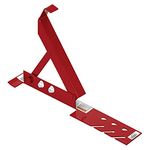
Roof Jacks
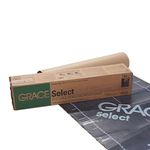
Peel & Stick Underlayment
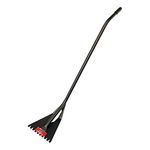
Shingle Ripper




